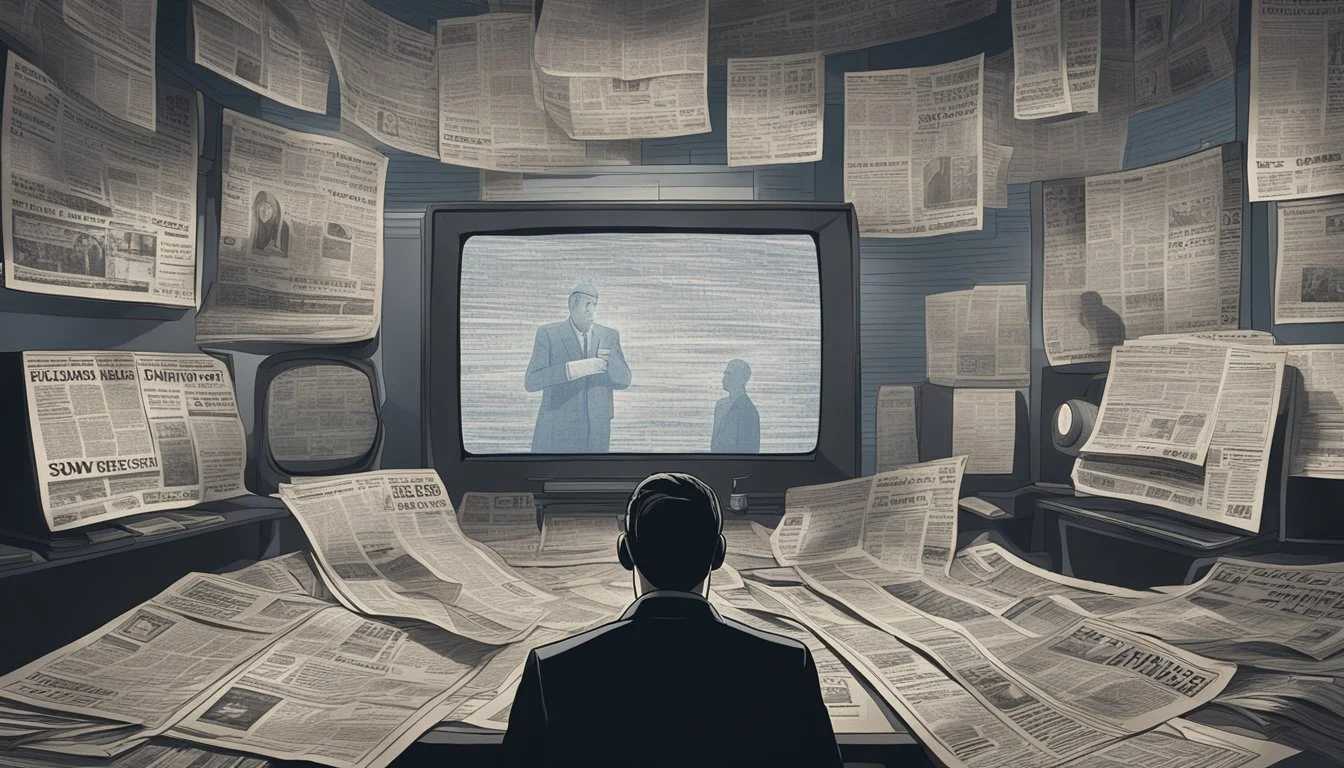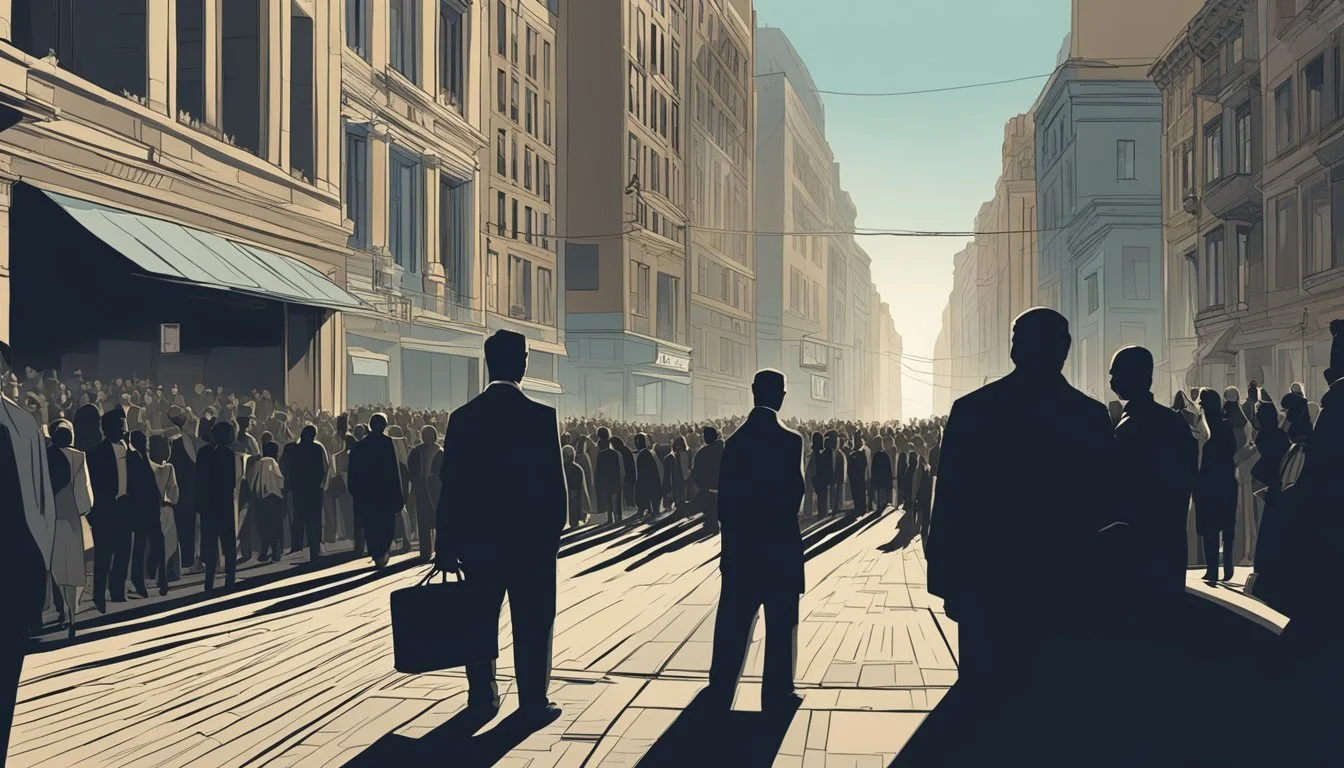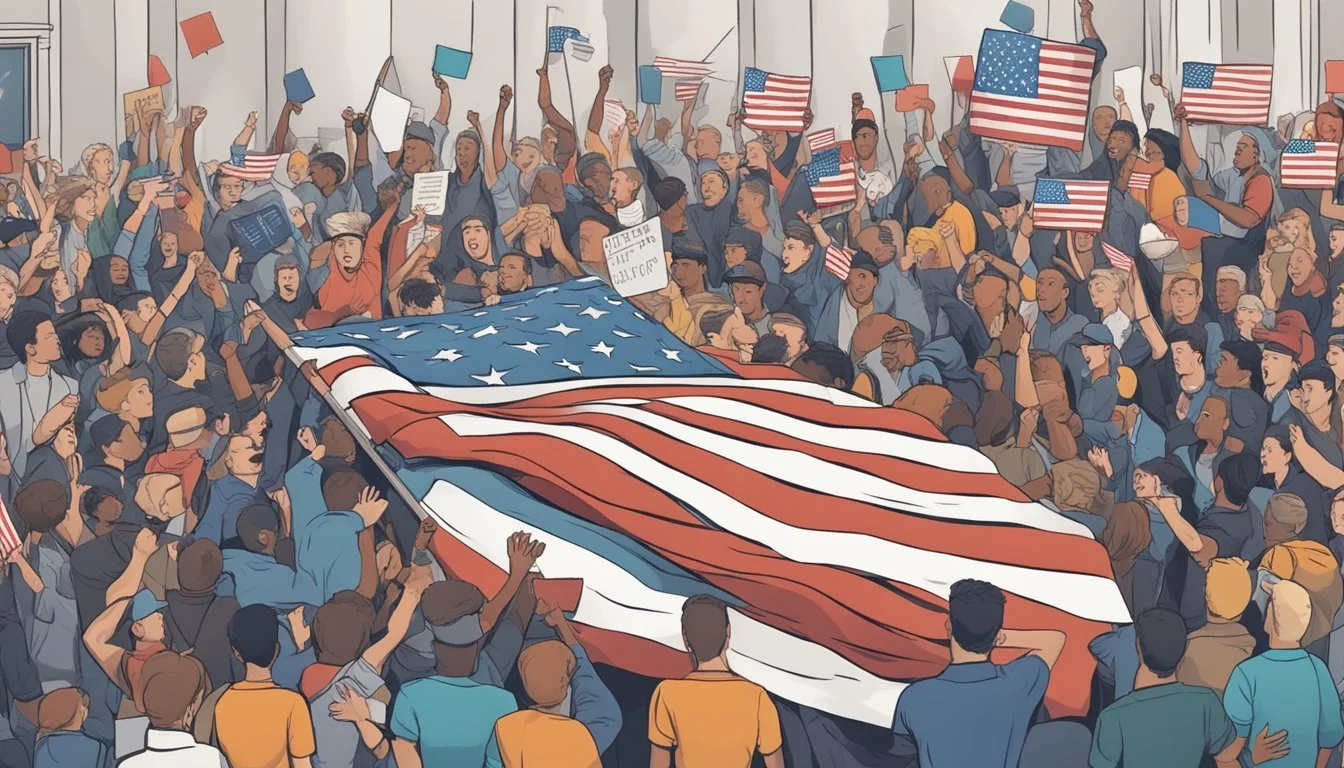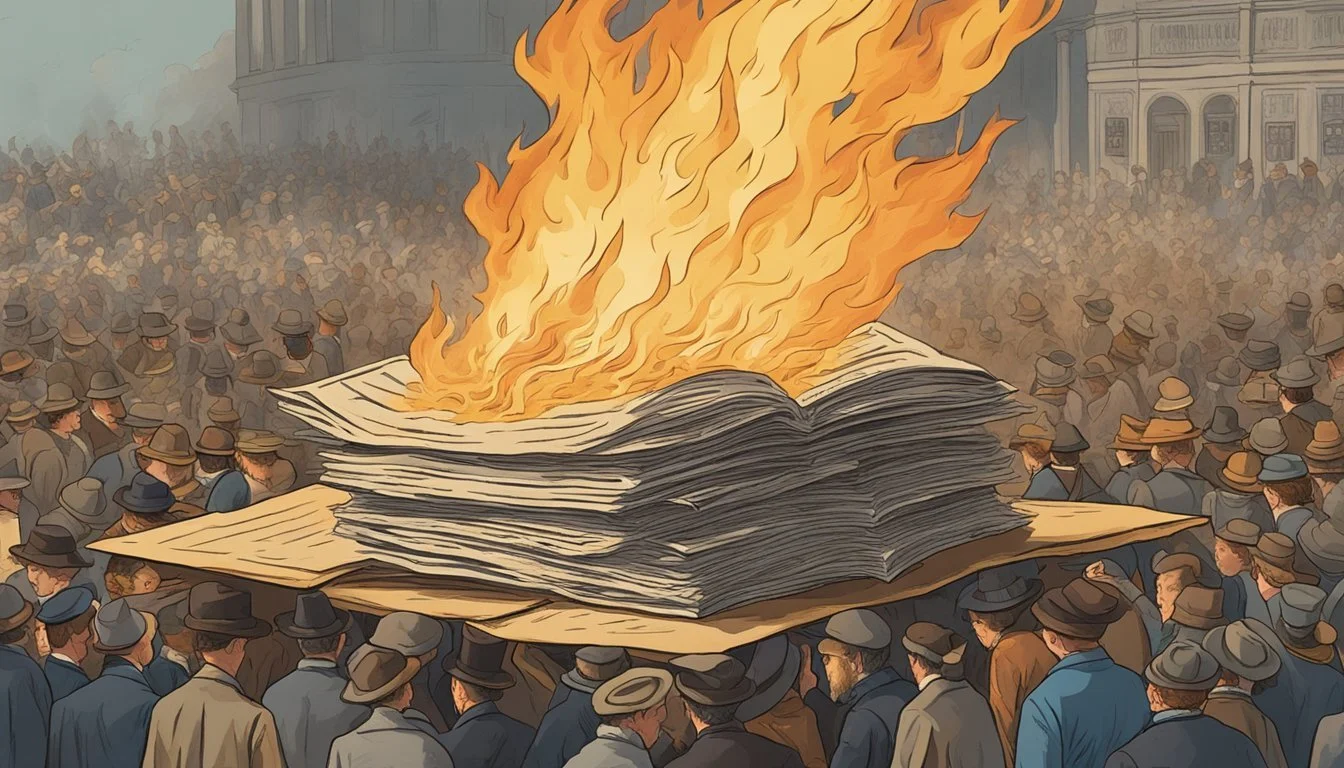American Nightmare and the Power of Public Opinion
How Social Media Shapes Political Discourse
The documentary "American Nightmare" sheds light on a disturbing case of injustice, highlighting the impact of public opinion on the American legal system. This true crime series explores the 2015 kidnapping of Denise Huskins, initially dismissed by police as a hoax. The case exposes how quickly public perception can turn against victims, even in the face of compelling evidence.
Public opinion plays a crucial role in shaping democracy and justice in America. When law enforcement and media jump to conclusions, it can lead to devastating consequences for those wrongly accused. The Huskins case demonstrates how easily assumptions and biases can cloud judgment, potentially derailing investigations and destroying lives.
The power of public opinion extends beyond individual cases, influencing broader societal attitudes and policy decisions. In an era of rapid information spread, the court of public opinion often moves faster than the legal system. This phenomenon underscores the need for careful consideration of facts and the presumption of innocence in both public discourse and official investigations.
The American Dream vs American Nightmare
The concepts of the American Dream and American Nightmare represent contrasting visions of life in the United States, shaped by historical events and societal changes. These ideas have evolved over time, reflecting shifting cultural attitudes and economic realities.
Historical Context of the American Dream
The American Dream emerged in the early 20th century as a belief in opportunity for all. It promised upward mobility through hard work and determination. This ideal took root during periods of economic growth, particularly after World War II. The 1950s saw a surge in homeownership, education access, and middle-class expansion.
Immigrants flocked to the U.S. in pursuit of this dream. They sought better lives for themselves and their children. The concept became deeply ingrained in American culture, featured in literature, film, and political rhetoric.
Evolution of the American Nightmare
As societal issues persisted, the notion of an American Nightmare developed. This darker perspective highlighted systemic inequalities and unfulfilled promises. The Civil Rights movement exposed deep-rooted racism that contradicted the dream's inclusive ideals.
Economic downturns, like the 2008 financial crisis, shattered many Americans' aspirations. Rising income inequality and stagnant wages made traditional markers of success increasingly unattainable. For some, the pursuit of the American Dream led to crushing debt and financial instability.
The concept of an American Nightmare also encompasses fears of violence, discrimination, and social unrest. It reflects the struggles of marginalized groups who face barriers to achieving the promised prosperity and equality.
Democracy and Public Opinion
Public opinion plays a crucial role in shaping democratic processes and policies. Citizens' views influence government decisions and hold elected officials accountable. The interplay between public sentiment and policymaking forms the backbone of representative democracy.
The Role of Citizens in Democracy
Citizens are the foundation of democratic societies. They participate in elections, express their views through various channels, and engage in civic activities. Voting is a primary means for citizens to influence government direction.
Beyond the ballot box, citizens shape democracy through:
Joining political parties or interest groups
Contacting elected officials
Participating in protests or demonstrations
Engaging in public discourse on social media
An informed and active citizenry is essential for a healthy democracy. Citizens must stay informed about political issues and critically evaluate information sources. This knowledge allows them to make educated decisions and hold leaders accountable.
Public Opinion and Policy Making
Public opinion significantly impacts policy decisions in democratic systems. Elected officials often consider public sentiment when crafting legislation or making policy choices. This responsiveness helps ensure that government actions align with citizens' preferences.
Several factors influence how public opinion shapes policy:
Intensity of public sentiment
Media coverage of issues
Lobbying efforts by interest groups
Electoral consequences for politicians
Polling and surveys provide insights into public views on various topics. Policymakers use this data to gauge support for potential initiatives. However, public opinion can be complex and sometimes contradictory, making it challenging for leaders to interpret and act upon.
Partisanship also affects the relationship between public opinion and policy. In polarized environments, politicians may prioritize their party's stance over broader public sentiment. This can lead to policy decisions that don't reflect the views of the majority.
The Impact of Political Polarization
Political polarization has profoundly shaped American society, influencing public discourse and civic engagement. It has created deep divisions between partisan groups and altered how citizens interact with political information.
Contemporary Partisanship
Partisan divides in the U.S. have widened significantly in recent years. Democrats and Republicans increasingly view each other as threats rather than simply political opponents. This heightened animosity has led to decreased cooperation across party lines.
Echo chambers have amplified these divisions. Many Americans now primarily consume news and information that aligns with their existing beliefs. This selective exposure reinforces partisan views and limits exposure to diverse perspectives.
The most politically engaged citizens tend to hold the strongest partisan views. Ironically, these highly polarized voters are often the most supportive of democratic norms and institutions.
Political Polarization and Civic Discourse
Political debate in America has become less respectful and fact-based. An overwhelming 84% of adults believe the tone of political discourse has worsened in recent years.
This deterioration in civic dialogue has real consequences. It makes compromise more difficult and can erode trust in democratic institutions. Some moderates have disengaged from politics entirely, feeling alienated by the harsh partisan rhetoric.
Polarization also impacts how citizens process information. Many now view political issues through a partisan lens, interpreting facts differently based on their party affiliation. This phenomenon further complicates efforts to find common ground on key issues.
Mass Media and Public Opinion
Mass media and social platforms wield significant influence over public opinion formation. Traditional outlets and emerging digital channels shape discourse on key issues through their coverage and framing.
The Role of Mass Media in Shaping Opinion
Television, newspapers, and radio remain influential in molding public views. These outlets select which stories to cover and how to present information, impacting audience perceptions. Editorial choices and framing can sway opinions on political, social, and economic matters.
Mass media often acts as an agenda-setter, directing public attention to specific issues. This power to highlight certain topics while downplaying others affects what people consider important.
News organizations' coverage of events and policies can reinforce or challenge existing beliefs. Repeated exposure to certain viewpoints may gradually shift public opinion over time.
Social Media: A New Frontier
Social platforms have revolutionized how information spreads and opinions form. Users can instantly share content, amplifying messages and shaping discussions.
These networks create echo chambers where like-minded individuals reinforce each other's views. This phenomenon can lead to polarization and the entrenchment of existing beliefs.
Social media facilitates rapid information flow but also enables the spread of misinformation. False or misleading content can quickly go viral, impacting public opinion before fact-checkers intervene.
Algorithms curate personalized content feeds, potentially limiting exposure to diverse perspectives. This selective information diet may contribute to fragmented public opinion on key issues.
Presidential Impact and Public Sentiment
Presidents shape public opinion through their actions and rhetoric, while public sentiment influences presidential decision-making. This dynamic relationship has evolved throughout American history, with modern leaders facing new challenges in the digital age.
Donald Trump and the Concept of Trumpism
Donald Trump's presidency marked a significant shift in the relationship between the executive office and public sentiment. His unconventional approach to communication, particularly through social media, allowed him to bypass traditional media channels and speak directly to his base.
Trump's rhetoric and policies polarized public opinion, creating a fervent support base while also generating strong opposition. This division in public sentiment shaped the political landscape during and after his presidency.
Trumpism emerged as a populist movement, characterized by:
America First policies
Skepticism of established institutions
Confrontational rhetoric
Emphasis on economic nationalism
Presidential Leadership: From George Washington to Joe Biden
George Washington set the precedent for presidential leadership, emphasizing unity and avoiding partisan divisions. Subsequent presidents have faced varying challenges in balancing public opinion with their policy agendas.
Abraham Lincoln navigated a deeply divided nation during the Civil War, making difficult decisions that sometimes conflicted with public sentiment. Franklin D. Roosevelt's fireside chats exemplified effective communication during times of crisis.
Modern presidents have grappled with:
24/7 news cycles
Social media scrutiny
Polarized political climate
Joe Biden has sought to restore traditional norms of presidential communication while addressing a fractured political landscape. His leadership style contrasts sharply with his predecessor, emphasizing unity and bipartisanship.
Public Health, Economy, and the American Psyche
The COVID-19 pandemic and economic turmoil have deeply impacted American society, reshaping public health approaches and altering the national psyche. These events exposed vulnerabilities in healthcare systems and economic structures.
COVID-19 and its Sociopolitical Ramifications
The pandemic highlighted significant flaws in America's public health infrastructure. Conflicting messaging from officials sowed confusion among citizens. Mask mandates and lockdowns became politically charged issues.
Vaccine rollouts faced logistical challenges and public skepticism. Misinformation spread rapidly on social media platforms. Rural and minority communities were disproportionately affected by the virus.
Public trust in health institutions eroded. The crisis revealed stark disparities in healthcare access and outcomes. It prompted debates on the balance between individual freedoms and collective safety.
Economic Tumult and the Employment Crisis
COVID-19 triggered unprecedented economic disruption. Millions lost jobs as businesses shuttered. Unemployment rates soared to levels not seen since the Great Depression.
The government responded with stimulus packages and expanded unemployment benefits. Some industries, like hospitality and retail, were hit especially hard. Remote work became the norm for many office employees.
Supply chain issues led to shortages and price increases. Inflation concerns grew as the economy began to recover. The pandemic accelerated existing trends towards automation and e-commerce.
Labor shortages emerged in certain sectors as the job market shifted. Debates intensified around issues like minimum wage and worker protections. The crisis highlighted the precarious financial situation of many Americans.
Civil Rights and Racial Divide
The struggle for racial equality in America has been long and complex. Public opinion and activism have played pivotal roles in shaping civil rights policies and social attitudes over time.
Black Americans and the Fight for Equality
Black Americans have fought tirelessly for equal rights and opportunities. The Civil Rights Act of 1964 marked a significant legal victory, outlawing discrimination based on race, color, religion, sex, or national origin. Despite this progress, systemic racism persists.
Racial disparities remain evident in education, employment, healthcare, and criminal justice. Black Americans continue to face higher poverty rates and lower median incomes compared to white Americans. These inequalities have fueled ongoing activism and calls for reform.
Recent events, like the killing of George Floyd in 2020, reignited nationwide protests against police brutality and racial injustice. These demonstrations highlighted the enduring racial divide and prompted renewed discussions on systemic racism in America.
Critical Race Theory and Public Debate
Critical Race Theory (CRT) has become a contentious topic in public discourse. This academic framework examines how race and racism intersect with various social institutions.
Proponents argue CRT provides valuable insights into systemic racism and its impacts. Critics claim it promotes division and unfairly portrays white Americans. The debate has spilled into education policy, with some states banning CRT-related concepts in schools.
Public opinion on CRT varies widely, often along partisan lines. The controversy highlights America's ongoing struggle to address racial issues constructively.
Historical and Modern Protests for Racial Justice
Protests have been a powerful tool in the fight for racial justice. The 1960s Civil Rights Movement, led by figures like Martin Luther King Jr., used nonviolent resistance to challenge segregation and discrimination.
Modern protests, such as the Black Lives Matter movement, have leveraged social media to mobilize supporters and raise awareness globally. These demonstrations have brought issues of police brutality and systemic racism to the forefront of public consciousness.
Public opinion on racial justice protests has fluctuated. While many Americans support the goals of racial equality, views on protest tactics and effectiveness remain divided. The ongoing debate reflects the complex nature of race relations in America.
State Specific Struggles
Political divisions and economic challenges create distinct hurdles for different states across America. These localized issues shape public opinion and policy priorities at the state level.
Political Factionalism in Alabama
Alabama's political landscape is marked by intense partisan divides. The Republican Party holds a strong majority in the state legislature and controls most statewide offices. This dominance has led to policy clashes between conservative and progressive factions.
Rural and urban areas often have conflicting priorities on issues like education funding and infrastructure development. Voter ID laws and redistricting efforts have sparked debates over voting rights and representation.
Tensions between state and federal authority occasionally flare up, particularly on issues like immigration enforcement and environmental regulations.
Economic and Health Disparities in Maryland
Maryland faces significant economic disparities between its affluent suburbs and struggling urban and rural areas. Baltimore continues to grapple with high poverty rates, crime, and unemployment compared to wealthier counties.
The state's healthcare system shows stark inequalities. While Maryland boasts world-class medical facilities, many residents in low-income areas lack access to quality care.
Efforts to address these gaps include targeted economic development initiatives and expanded Medicaid coverage. However, progress remains slow in bridging the divide between Maryland's most and least prosperous regions.
America in the Global Context
America's position on the world stage continues to evolve, shaped by shifting international perceptions and its approach to global policy issues. Public opinion abroad and domestic policies intersect to influence America's role and relationships with other nations.
International Perceptions of American Politics
Recent surveys indicate mixed views of the United States internationally. In South Korea, 83% consider the U.S. a reliable partner, marking a 25-point increase since 2021. Israel shows strong confidence, with 31% viewing America as very reliable. However, these positive trends are not universal.
Some nations express concerns about American domestic politics and foreign policy decisions. Immigration policies and climate change stances have drawn particular scrutiny from global observers. These issues often shape broader perceptions of American leadership and values.
Public diplomacy efforts aim to address these perceptions. Despite recent challenges, American soft power remains influential in shaping global opinion.
America's Role in Global Public Policy
The U.S. continues to play a significant role in shaping global public policy, though its influence has evolved. Climate change negotiations, international trade agreements, and immigration policies are key areas where American involvement remains crucial.
America's approach to these issues often sets precedents for other nations. For example, U.S. climate policies can significantly impact global efforts to reduce emissions. Similarly, American immigration policies influence global migration patterns and discussions on refugee rights.
Public opinion, both domestic and international, increasingly shapes America's policy decisions. This interplay between public sentiment and policymaking affects the country's ability to lead on global issues.
Historical Documents and Public Consciousness
The Federalist Papers and the Constitutional Convention played pivotal roles in shaping America's republican ideals and governmental structure. These foundational documents and events profoundly influenced public consciousness and political thought in the early United States.
The Federalist Papers and Republican Ideals
The Federalist Papers, written by Alexander Hamilton, James Madison, and John Jay, were crucial in promoting the ratification of the Constitution. These 85 essays explained complex political concepts to the public, advocating for a strong federal government while addressing concerns about tyranny.
Madison's Federalist No. 10 explored the dangers of factions and proposed a republican solution. The papers emphasized checks and balances, separation of powers, and representative democracy.
Their impact on public opinion was significant. They sparked debate in taverns, homes, and newspapers across the nation. The Federalist Papers continue to shape legal interpretation and civic education today.
Constitutional Convention and the Vision for America
The Constitutional Convention of 1787 brought together delegates to address the weaknesses of the Articles of Confederation. James Madison, often called the "Father of the Constitution," played a key role in drafting the new framework.
Debates at the convention centered on representation, executive power, and the balance between state and federal authority. The resulting document established a federal system with three branches of government.
The Constitution's preamble, "We the People," emphasized popular sovereignty. This radical idea placed power in the hands of citizens, shaping public consciousness about the role of government.
Ratification debates further engaged the public, with Federalists and Anti-Federalists presenting competing visions for America's future. This process of public discourse helped solidify the Constitution's legitimacy in the eyes of the people.
Checks, Balances, and Governmental Power Dynamics
The American system of government relies on a delicate balance of power between branches and adherence to constitutional principles. This framework aims to prevent any single entity from gaining unchecked authority.
Separation of Powers and Modern Governance
The U.S. Constitution establishes three distinct branches of government: executive, legislative, and judicial. Each branch has specific roles and limitations. The president leads the executive branch, Congress makes laws, and the Supreme Court interprets them.
This separation creates a system of checks on power. Congress can override presidential vetoes. The president nominates Supreme Court justices, but the Senate must confirm them. The Supreme Court can strike down laws as unconstitutional.
In practice, the balance of power shifts over time. Presidential authority has expanded in recent decades, particularly in foreign policy and national security matters. This trend has raised concerns about executive overreach.
Constitutional Checks and the Rule of Law
Constitutional checks serve as guardrails for governmental power. The Bill of Rights protects individual liberties from government infringement. The impeachment process allows Congress to remove corrupt officials.
Elected representatives must abide by the Constitution and established laws. This principle of the rule of law applies equally to citizens and government officials. It prevents arbitrary exercise of power and ensures fair treatment under the law.
The federal system further divides power between national and state governments. This structure allows for local control while maintaining national unity. It creates additional checks on centralized authority.
Courts play a crucial role in upholding the Constitution and resolving disputes between branches. Their decisions shape the interpretation and application of laws across the country.






